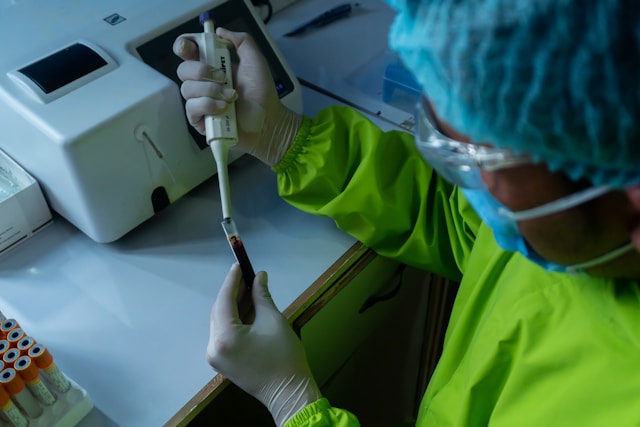Groundbreaking e-skin technology integrates with the human body, offering unprecedented health monitoring capabilities and surprising sensitivity responses.
In a remarkable leap forward for medical technology, researchers have successfully implanted the world’s first electronic skin, or e-skin, into a human patient, igniting excitement and astonishment in the medical community. This pioneering development promises to redefine the landscape of healthcare by providing continuous, real-time monitoring of vital health metrics through seamless integration with the human body.
The e-skin, designed to replicate the functions of natural skin, combines advanced materials and artificial intelligence to create a versatile interface capable of capturing biosignals without invasive procedures. According to Dr Dutta, who has extensively researched this area, e-skin is a fusion of integrated electronics that can be applied to various surfaces, including human skin and robotics, enhancing our ability to monitor health conditions.
Embed from Getty ImagesOne of the most striking features of e-skin technology is its flexibility and comfort. Designed for applications ranging from smart bandages and wristbands to tattoo-like stickers and intelligent fabrics, e-skin serves as a human-machine interface that monitors a range of health indicators, including temperature, heart rate, and sweat levels. The recent implantation marked a significant milestone, as it establishes a continuous connection between the human nervous system and electronic devices.
The implications of this innovation are profound. As e-skin interacts with the nervous system, it creates a digital interface that has the potential to revolutionise non-invasive health monitoring. With the capability to deliver precise data and feedback, this technology raises the bar for health diagnostics, paving the way for a future where health metrics can be monitored in real time.
However, what shocked medical experts most was the unexpected reactions from the human body post-implantation. Initial observations indicated heightened sensitivity around the site of implantation, revealing that the nervous system was responding more effectively to the electronic interface than anticipated. This remarkable interaction has prompted further inquiries into how the human body adapts to such high-tech enhancements. Doctors have noted alterations in nerve endings that were not predicted during the development phase, raising intriguing questions about the body’s capacity to embrace this cutting-edge augmentation.
The integration of machine learning is another key element behind the successful implementation of e-skin technology. Dr. Dutta explains that machine learning, as a subfield of artificial intelligence, plays a critical role in optimising material production and identifying promising substrates with the desired properties. By analysing material characteristics, AI assists in selecting and refining fabrication techniques, significantly enhancing the design and manufacturing processes of e-skins.
Moreover, machine learning optimises the design of e-skins and ensures stringent quality control throughout mass production. Compared to traditional mechanical simulations, machine learning proves to be more efficient at discovering innovative kirigami designs for planar elastomeric membranes and shape-adaptive e-skins. Such adaptability is essential for e-skin applications on curved surfaces.
As researchers continue to explore this uncharted territory, they acknowledge the need for preprocessing techniques to address the challenges posed by high-variance material data. This includes rebalancing biased training sets and interpolating missing information to develop a more standardised dataset. By leveraging machine learning, researchers aim to streamline material creation and discovery processes, contributing to the ongoing success of e-skin technology.
In conclusion, the successful implantation of electronic skin into a human being marks a monumental achievement in the convergence of technology and medicine. With its potential to enhance health monitoring and foster unprecedented connections between the human body and electronic devices, e-skin technology stands at the forefront of a new era in healthcare. As experts continue to analyse the implications of this groundbreaking development, one thing is clear: the future of medicine is not only about treating ailments but also about empowering individuals to actively engage with their health.
